Great is Artemis of the Ephesians !
According the Greek Mythology Artemis was the daughter of Zeus and Leto, also the twin sister of Apollo.
She was born in Ortygia (near Ephesus).
Mentioned by Strabo as below
Strabo, Geography 14. 1. 20 “On the same coast (near the city of Ephesos) slightly above the sea, is also Ortygia, which is a magnificent grove of all kinds of trees, of the cypress most of all. It is traversed by the Kenkhrios (Cenchrius) River, where Leto is said to have bathed herself after her travail. For here is the mythical scene of the birth, and of the nurse Ortygia, and of the holy place where the birth took place, and of the olive tree near by, where the goddess is said first to have taken a rest.
Artemis was the goddess of chastity, hunting, wild animals, forests, childbirth, and fertility.

She may, however, be identified with the Cybele of the Phrygians whose name she also bore, and with several other deities who were worshipped under different names in various parts of the Orient.
Several forms and names under which she appears are due to the varying developments in different regions.

As a deity of fertility, the goddess was particularly revered at Ephesus where her famous temple was located. This temple was one of the seven wonders of the ancient world.
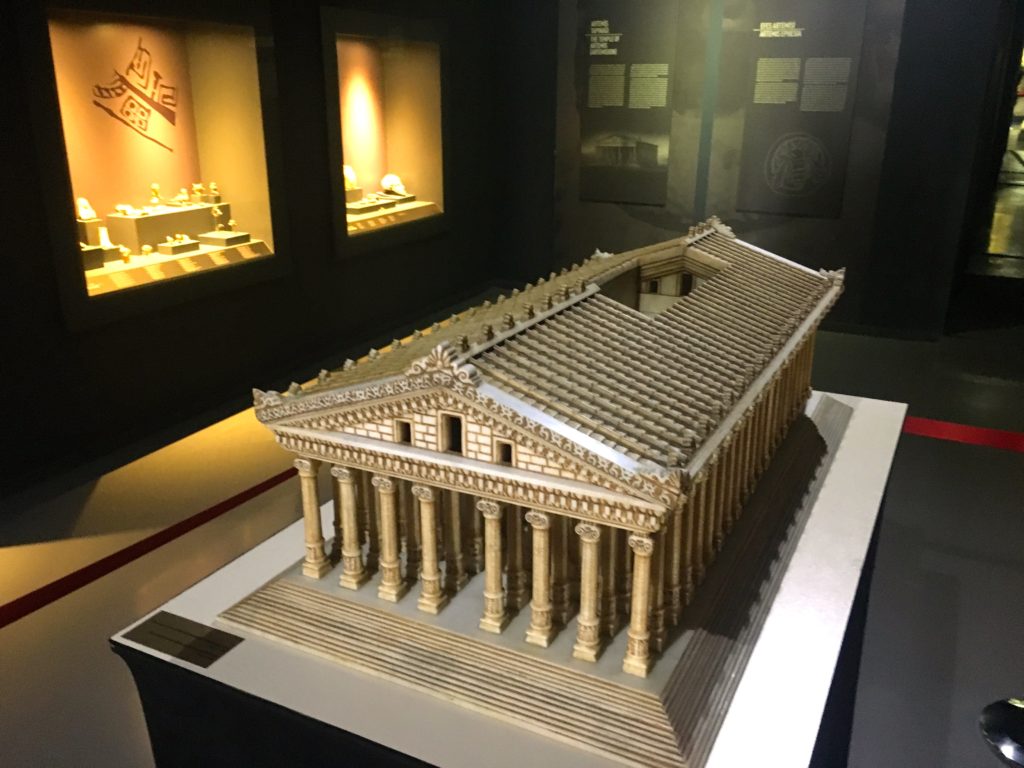
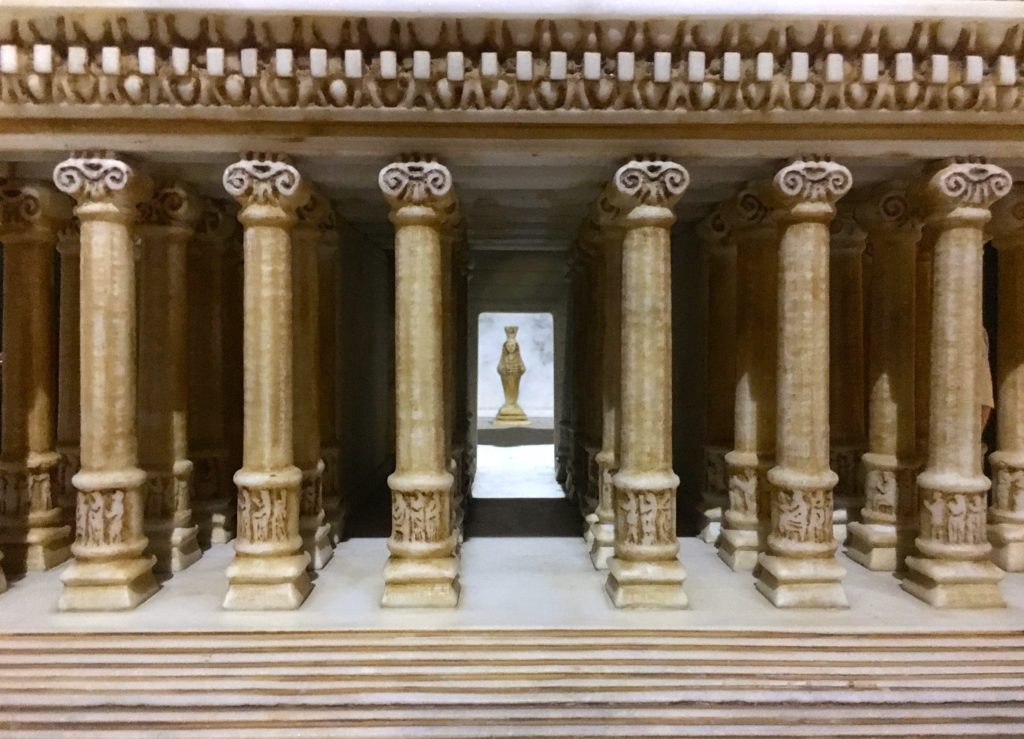
The ancient travel-writer Pausanias remarked that “All cities worship Artemis of Ephesus, and all individuals hold her in honour.”
The spread of the cult of Artemis Ephesia throughout the Greek world was extraordinary. During the late Hellenistic period, many cities within the territories ruled by the Greeks had a temple or shrine dedicated to the highly regarded goddess, or to a version of her.
It was the city of Ephesus alone that had a particularly strong and lasting bond with their goddess.
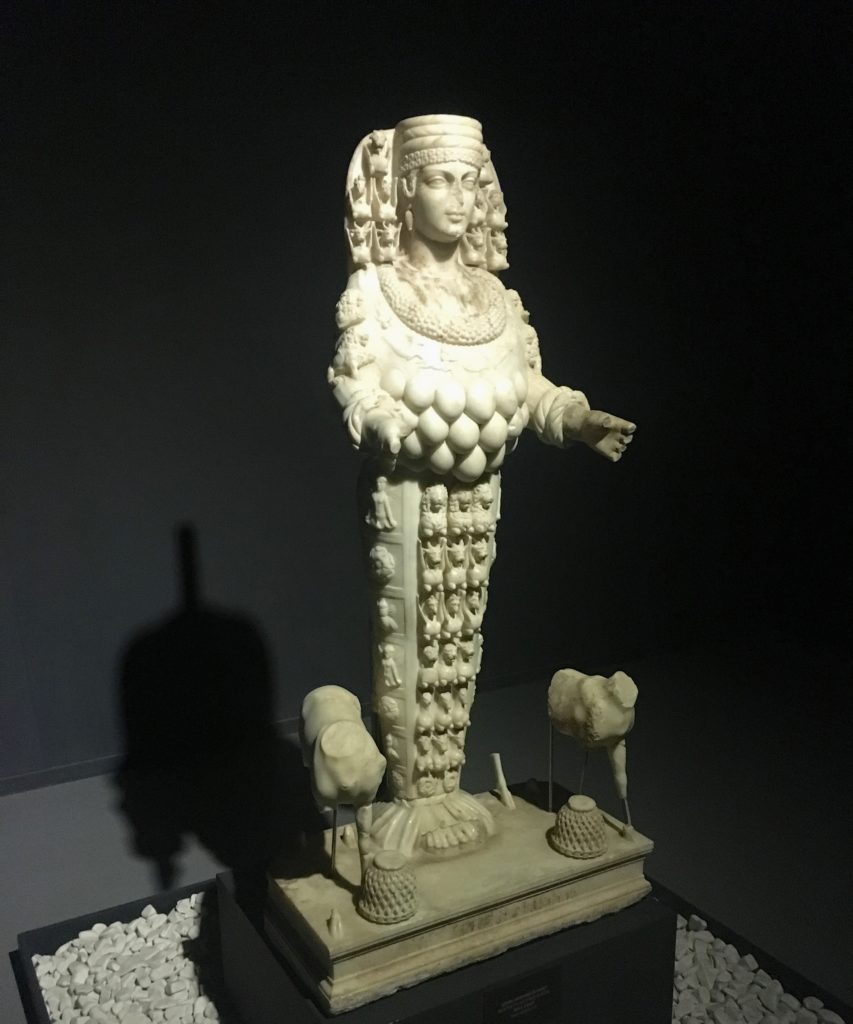
Artemis of Ephesus was quite unlike Greek goddesses and she had a unique and distinctive appearance. Her images and forms of worship remained more Asiatic than Greek Her earliest statues were figures crudely carved in wood. Later when she was represented in stone and metals, she bore upon her head a mural headdress, representing a fortitled city wall; from it, drapery hung upon each side of her face to her shoulders. The upper part of her body was completely covered with rows of breasts (or eggs??) to signify that she was the mother of all life.

As the statues indicate, she impersonated the reproductive powers of men and of animals and of all other life.
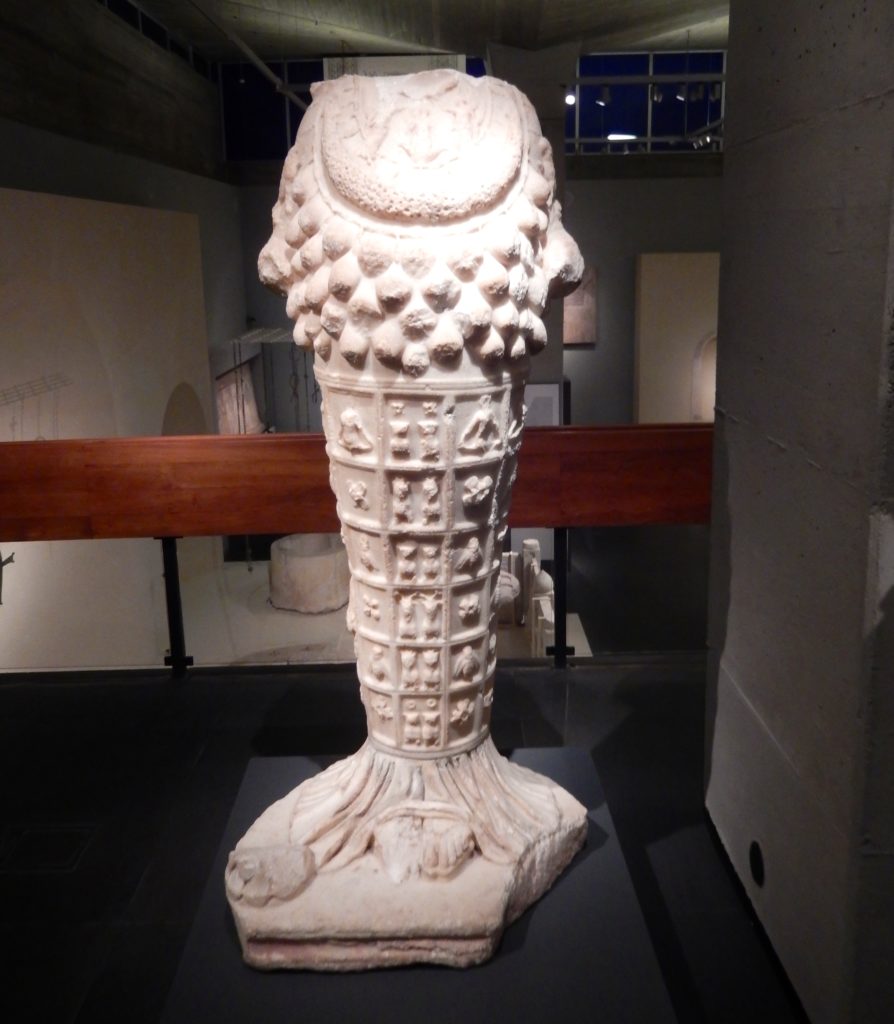
The traditional interpretation of the oval objects covering the upper part of the Ephesian Artemis is that they represent multiple breasts, symbolizing her fertility. This interpretation began in late antiquity and resulted in designations of the Ephesian goddess as Diana Efesia Multimammia and other related descriptions. For some scholars, common assumption that they are female breasts is incorrect. They probably represent the testicles of a bull, although they may also be gourds, which were known in Asia as fertility symbols for centuries.
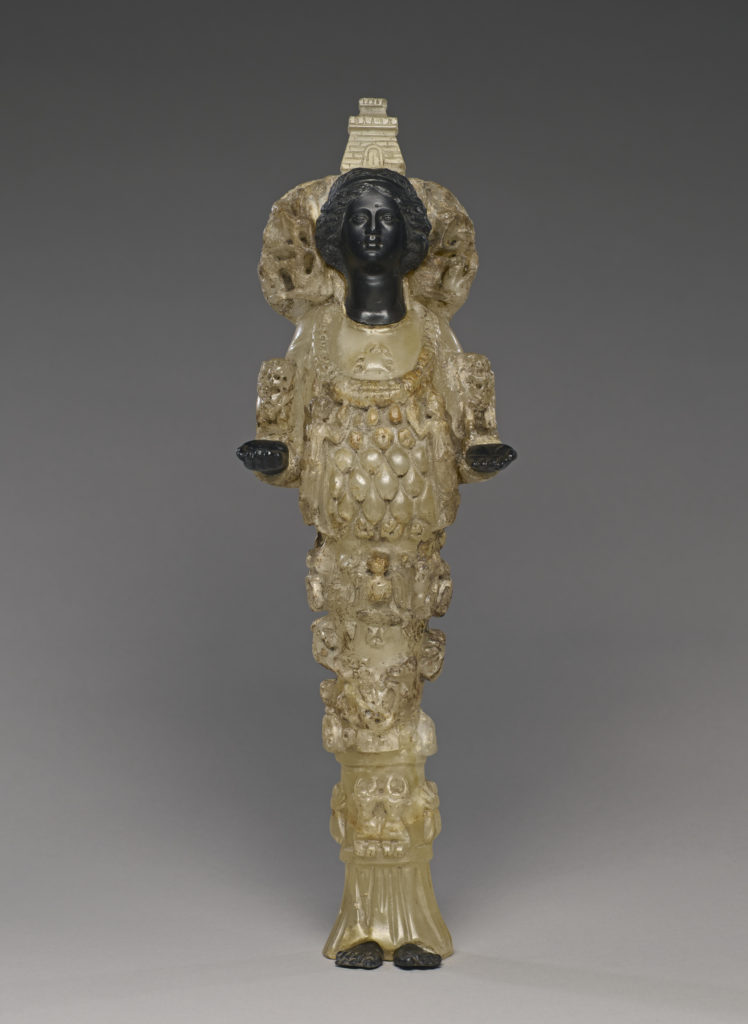
On Ephesian Artemis skirt there are various protomes (heads or busts) of animals arranged in rows, or tiles. Some of the animals are difficult to identify. Furthermore, while some protomes are of real animals, others are of mythical animals that look terrifying or terrified. Some scholars identify the animals as lions, griffins, horses, bulls, and bees.
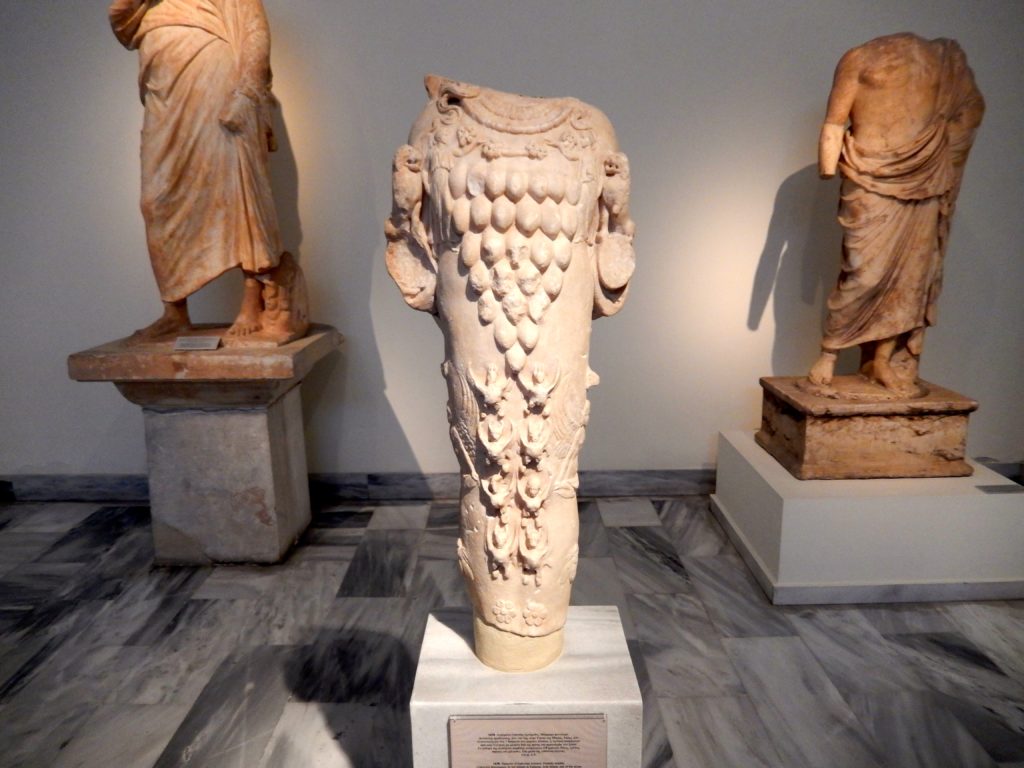
The goddess often has two lions on each sleeve who are gazing up at her. On some surviving statues there is a disk behind Artemis’s neck and head, possibly representing the moon, with still more creatures on it.
In the Iliad (8th century BC) the Greek Artemis is referred to as the “Lady (or Mistress) of Wild Beasts” This epithet, and the idea behind it, appears to have been attributed to the Ephesian Artemis during the Hellenistic period. The Ephesian goddess is covered and surrounded by animals and was thought to have power over them.

That Artemis had authority over wild animals may explain the figures of real animals on her clothing, but what about the mythical creatures? Clinton Arnold, in his book Ephesians: Power and Magic, states: “ a single common feature may be discerned among all religious diversity in western Asia Minor: people had an extraordinary fear of hostile spiritual powers”. Through their practices and rituals . . . religion and magic claimed to offer relief from this oppressive fear, and even promised means of control over the dreaded demonic realm. As “Queen of the Cosmos” Artemis of Ephesus supposedly had authority and power over demons and over the demonic realm situated in the cosmic abyss. Thus the creatures “appear to be in a posture of surrender to the great power of the goddess.”
The worshipers of Artemis beleived they were devoted to an awesome deity who could not help only for their daily life but also protect them from evil powers.
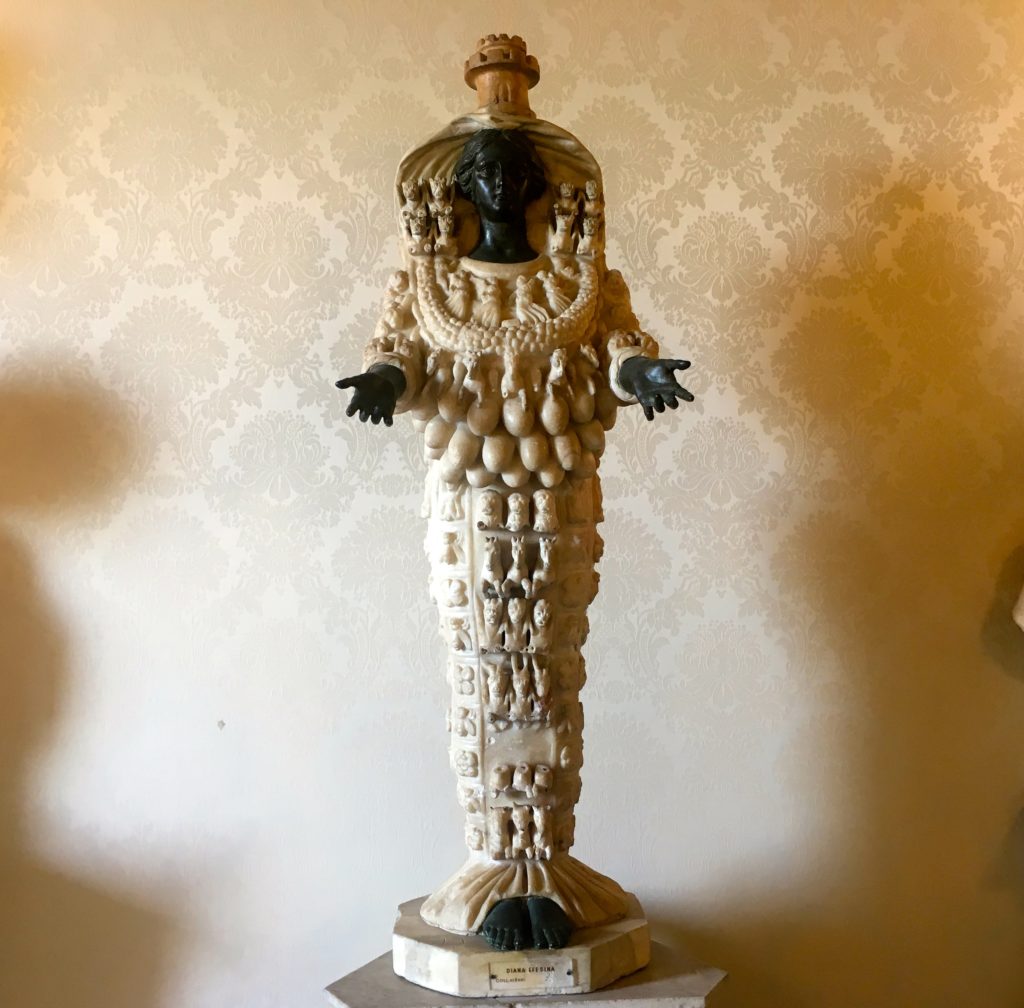

On Ephesian Artemis skirt there are various protomes (heads or busts) of animals arranged in rows, or tiles. Some of the animals are difficult to identify. Furthermore, while some protomes are of real animals, others are of mythical animals that look terrifying or terrified. Some scholars identify the animals as lions, griffins, horses, bulls, and bees.
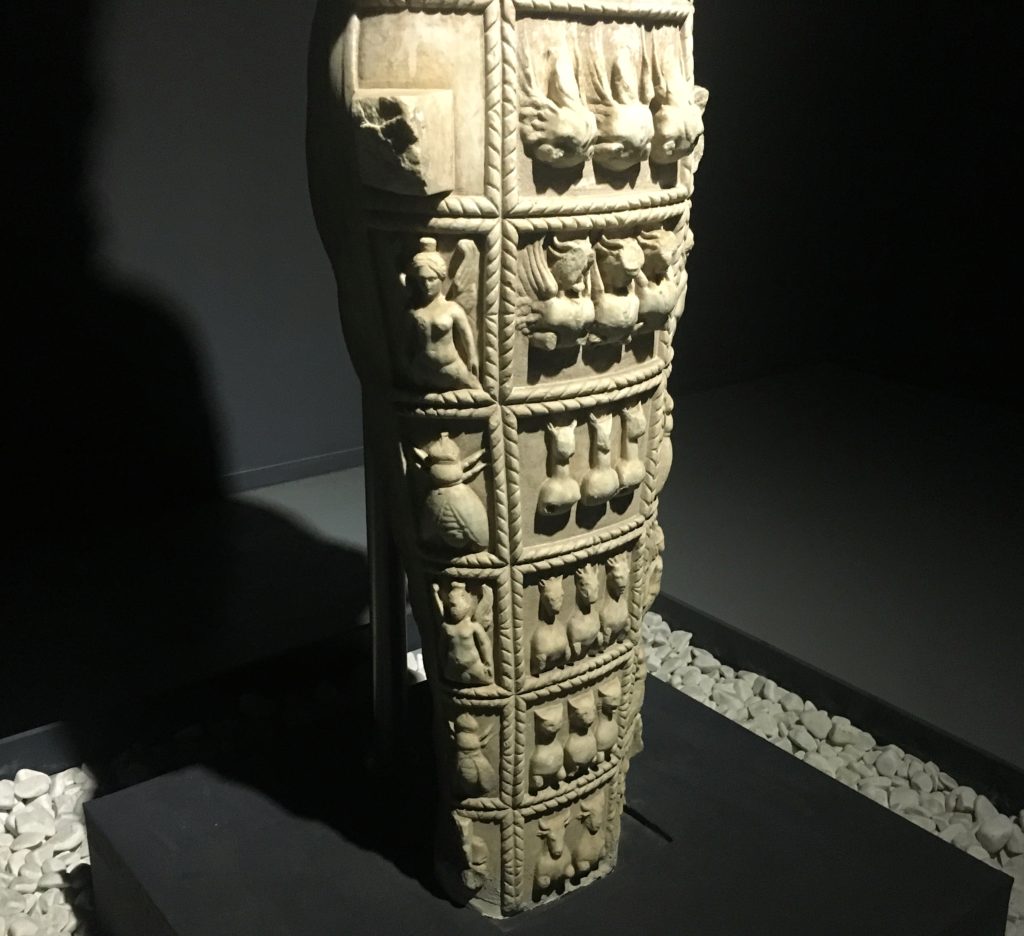
There are many evidences that Artemis was associated with bees. Bees and winged “bee-people” feature on the side panels of her skirt. Also, in the early Roman period, one of her cult statues, known as the “Beautiful Artemis” was erected between two beehives carved of stone.


Fountain of Diana of Ephesus, also known as the Fountain of Mother Nature
This statue originally stood next to the Fountain of the Organ; it was moved to the lower garden by Alessandro d’Este in the 16th century. It was made by the Flemish sculptor Gillis van den Vliete in 1568, and modeled after a classical Roman statue
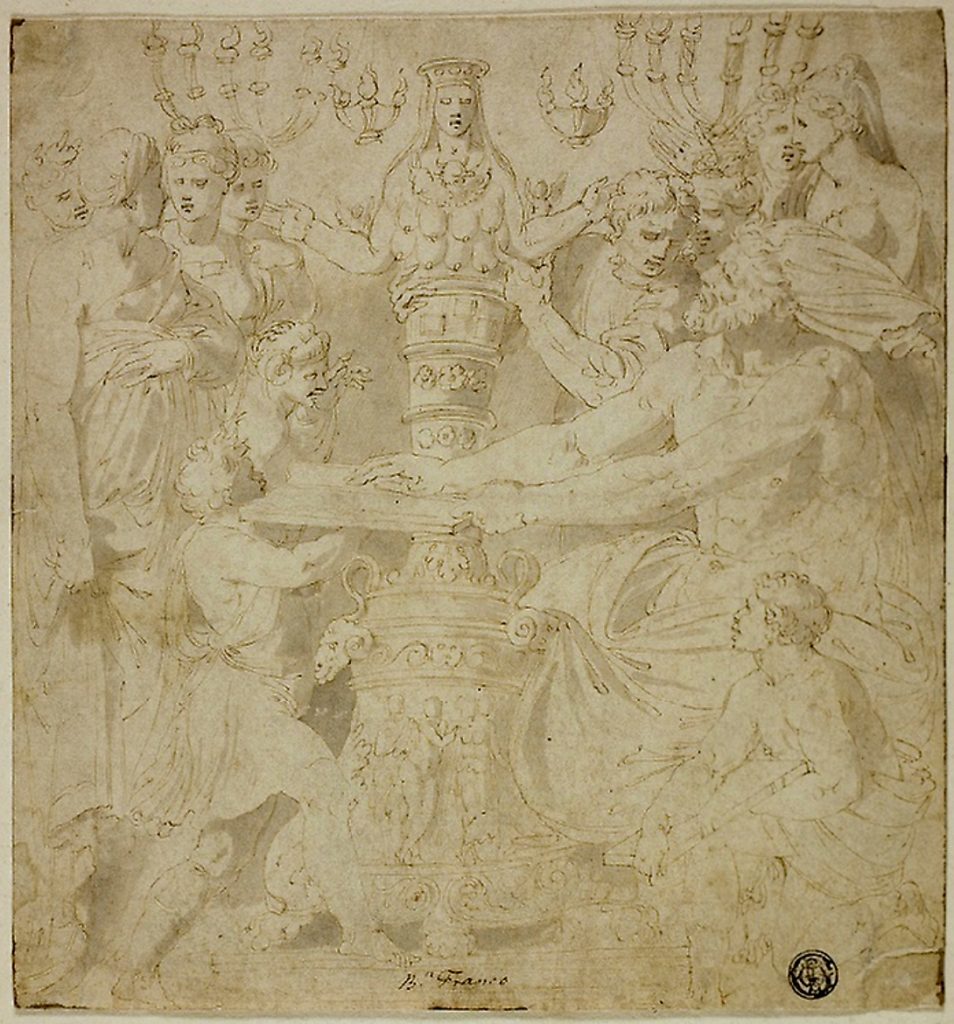
Oracle and Worshippers before the Statue of Artemis of Ephesus
Art Institute of Chicago
The goddess was also associated with the moon and was the patron of young women.
No doubt, she had remarkable power during the Greco-Roman period !

